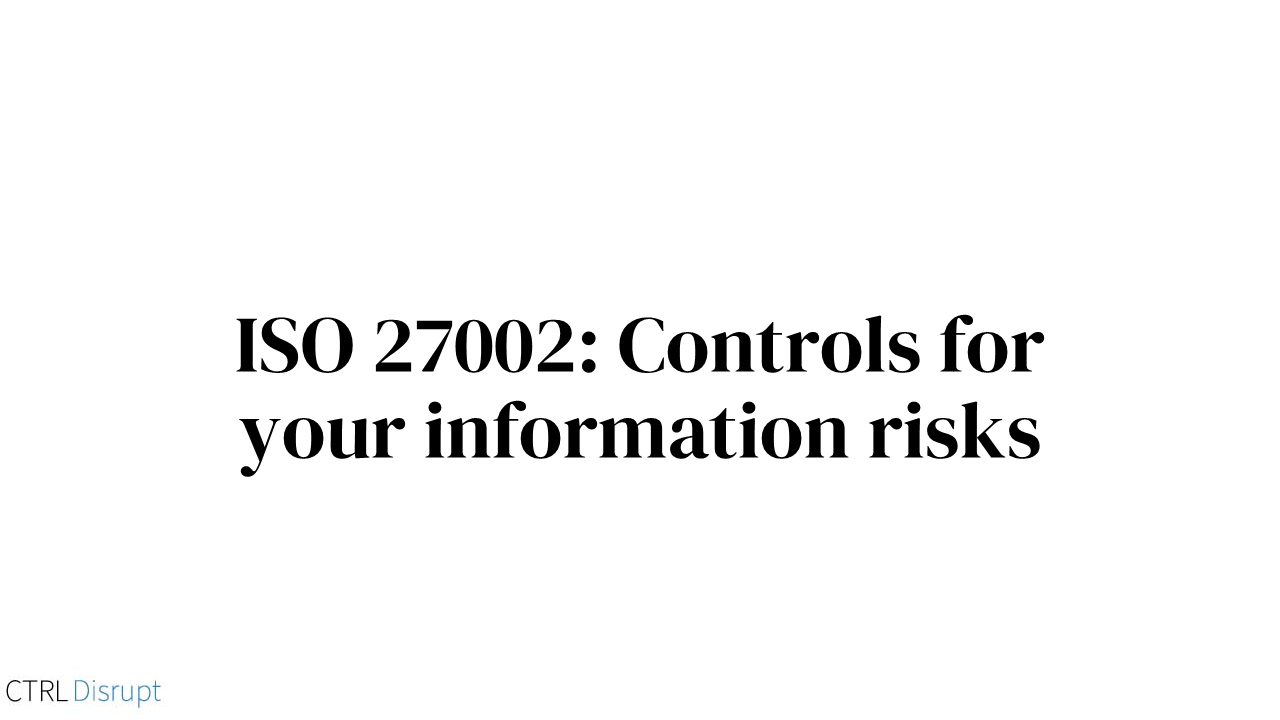The Role and Implementation of an Information Security Management System in Modern Enterprises
Introduction
In today's digital age, the protection of sensitive information has become a vital concern for organizations across industries. One of the most effective ways to safeguard an organization's digital assets is through the implementation of an Information Security Management System (ISMS). This article aims to outline what an ISMS is, why it is valuable for an enterprise, and how organizations can implement or begin with an ISMS.
What is an Information Security Management System?
An Information Security Management System (ISMS) is a systematic approach to managing and protecting an organization's information assets. It includes a set of policies, procedures, and controls that help identify, assess, and mitigate potential risks to the organization's data, including its storage, processing, and transmission. The main objective of an ISMS is to ensure information risk is managed within an, for the enterprise, acceptable level of residual risk.
One of the most widely recognized and adopted ISMS frameworks is ISO/IEC 27001, which provides guidelines and requirements for establishing, implementing, maintaining, and continually improving an ISMS.
Why is an Information Security Management System valuable for an enterprise?
An Information Security Management System (ISMS) offers several significant benefits to organizations, including:
-
Risk management: Implementing an ISMS allows organizations to identify and address potential threats and vulnerabilities in a structured and proactive manner, reducing the likelihood of security breaches. It also makes sure information risk stays within the risk appetite of the enterprise.
-
Compliance: By adhering to ISMS standards such as ISO/IEC 27001, organizations can demonstrate their commitment to information security and comply with regulatory requirements, which can be critical for industries with strict data protection regulations such as the General Data Protection Regulation (GDPR), Network and Information Security 2 (NIS2) or Digital Operational Resilience Act (DORA).
-
Customer trust: An ISMS helps enterprises ensure the confidentiality, integrity, and availability of sensitive customer data. This fosters trust and can lead to increased customer loyalty and satisfaction.
-
Cost savings: By mitigating security incidents, an ISMS can help organizations avoid financial losses and the associated costs of recovering from a breach.
-
Competitive advantage: Organizations with robust ISMS implementations can differentiate themselves from competitors and potentially win more business by demonstrating a higher level of security and risk management. Studies have shown that enterprises with mature (enterprise) risk management practices have on average 17%-20% more value than enterprises without it.
How to implement or start with an ISMS?
Implementing an Information Security Management System (ISMS) that is aligned with the business objectives of an enterprise requires a comprehensive and structured approach. The following list of steps provides a general (approaches differ per organizational context) outline for implementing an ISMS:
-
Obtain management commitment: Secure buy-in and support from top management, emphasizing the importance of aligning the ISMS with business objectives. This includes allocating necessary resources and fostering a security-aware organizational culture.
-
Establish a governance structure: Set up a governance framework that outlines the roles, responsibilities, and reporting lines for information security within the organization. This may include appointing a Chief Information Security Officer (CISO) or setting up an information security steering committee.
-
Define the ISMS scope and boundaries: Determine the scope of the ISMS by identifying the information assets, processes, and systems that need protection, taking into account the organization's business objectives and priorities.
-
Develop an information security policy: Create a high-level policy that establishes the organization's approach to information security and reflects its business objectives. This policy should be approved by top management and communicated to all employees.
- Implement a monitoring and measurement program: Define key performance indicators (KPIs) to measure the effectiveness of the ISMS and its alignment with business objectives. Regularly report these metrics to senior management and other relevant stakeholders.
-
Define risk assessment methodology: Establish a methodology for assessing information risks that is consistent with the organization's risk appetite and business objectives.
-
Conduct risk assessment(s): Identify, analyze, and evaluate potential risks to the organization's information assets, taking into account the potential impact on business objectives.
-
Develop risk treatment plan(s): Select appropriate risk mitigation measures (e.g., policies, procedures, and technical controls) based on the risk assessment and the organization's business objectives.
-
Implement the risk treatment plan(s): Deploy the selected measures and ensure that employees are trained in relevant procedures and policies.
-
Define roles and responsibilities: Assign clear roles and responsibilities for information security, ensuring that they align with the organization's business objectives and structure.
- Conduct staff training and awareness programs: Implement training and awareness programs that are tailored to the organization's business objectives, ensuring that employees understand their role in protecting information assets.
-
Establish an incident management process: Develop a process for responding to security incidents that prioritizes the protection of the organization's business objectives.
-
Conduct internal audits and management reviews: Periodically assess the performance and effectiveness of the ISMS, focusing on its ability to support the organization's business objectives. Identify opportunities for improvement and implement corrective actions as needed.
-
Continuously improve the ISMS: Monitor and review the ISMS on an ongoing basis, ensuring that it remains aligned with the organization's business objectives and adapts to changes in the threat landscape and business environment.
-
Obtain certification (optional): Organizations can choose to seek certification for their ISMS from an accredited certification body, such as ISO/IEC 27001. This can provide external validation of the organization's commitment to information security.
By following these steps, organizations can implement an ISMS that not only helps mitigate information risks but also supports their business objectives, enabling them to achieve a competitive advantage in the marketplace. Be sure to tailor these steps to the context of your organization. Not sure how to start? Or would you like more guidance? Reach out to our experts, we're happy to help you on your journey.
Conclusion
An Information Security Management System (ISMS) is an essential tool for organizations looking to protect their digital assets and maintain trust with stakeholders. By following best practices and aligning with established frameworks, enterprises can effectively implement and maintain an ISMS that not only helps mitigate threats but also provides a competitive advantage in the market by enabling opportunities. Organizations should continuously review and improve their ISMS to adapt to the ever-changing threat & opportunity landscape and ensure the ongoing protection & exploitation of their information assets.

 By
By


